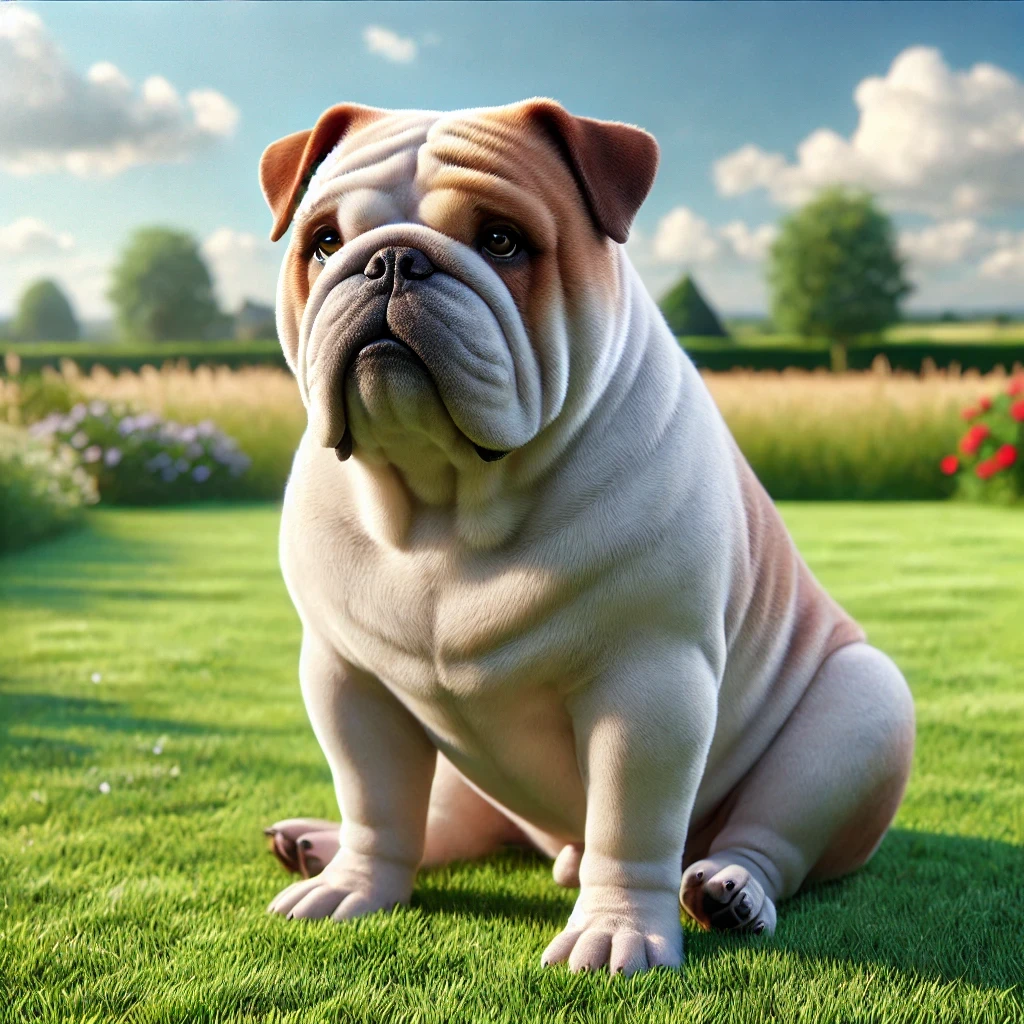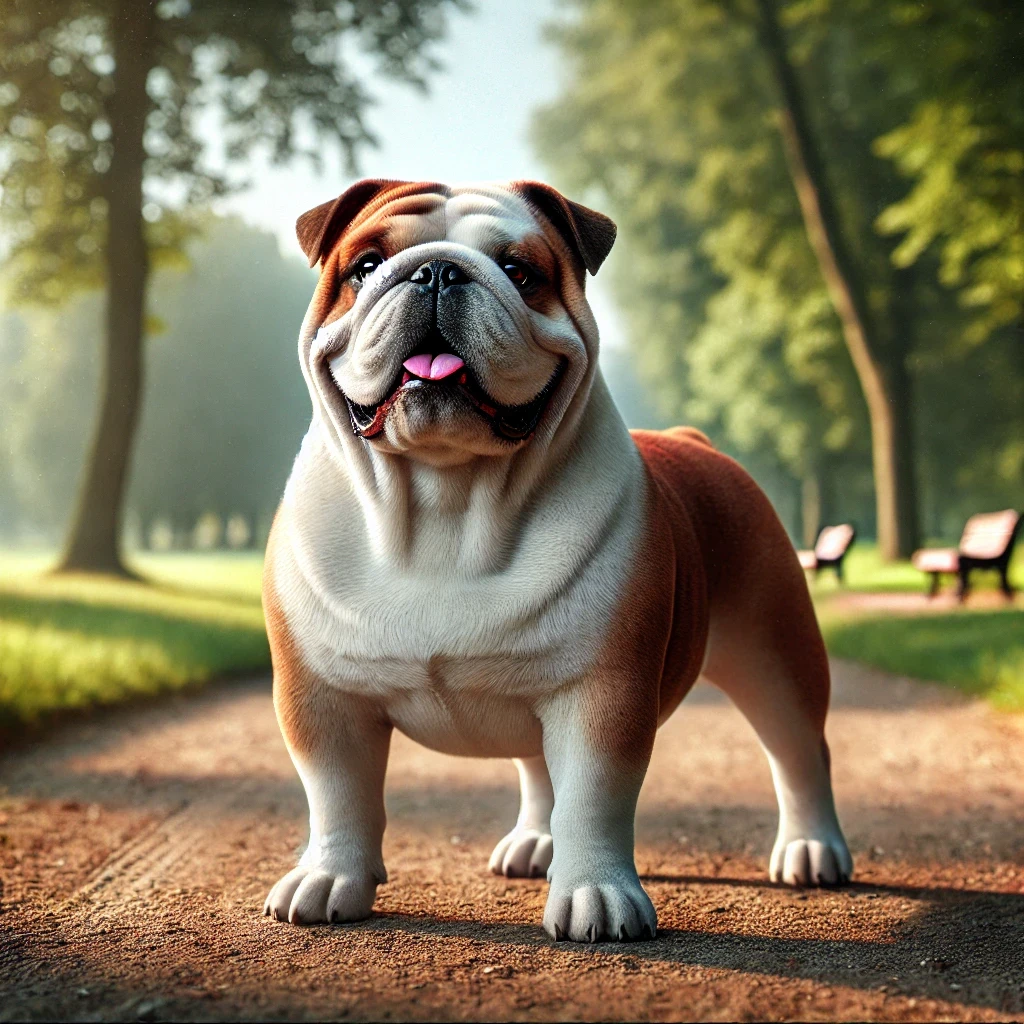In this complete guide, we’ll walk through the most important Bulldog dog breed facts; covering its history, personality traits, care needs, health risks, and surprising statistics that make this breed one-of-a-kind.

The Bulldog is one of the most recognizable and adored dog breeds worldwide. Known for its muscular build, wrinkled face, and famously calm demeanor, the Bulldog is often referred to as a symbol of strength, loyalty, and determination. But beyond its signature look lies a friendly, affectionate companion that’s perfect for many types of households.
Origins of the Bulldog
The Bulldog’s history is one of transformation—from fierce fighter to beloved family companion. This iconic breed traces its roots back to 13th-century England, where it was initially bred for the cruel and dangerous sport of bull-baiting. The term “bulldog” literally referred to their original purpose: gripping bulls by the nose and holding them in place. These early Bulldogs were much larger and more athletic than today’s version, valued for their courage, muscular build, and tenacity.
As bull-baiting grew in popularity, so did the demand for Bulldogs with immense strength and a fearless nature. Unfortunately, this also made them targets for exploitation in gambling and bloodsports. Thankfully, in 1835, the practice of bull-baiting was outlawed in England under the Cruelty to Animals Act, which marked a turning point in the breed’s evolution.
With their original role eliminated, Bulldog breeders began reshaping the breed. Over time, they selectively bred out the aggressive tendencies while preserving the dog’s trademark look and loyal personality. The result was a shorter, calmer, more affectionate companion dog—the modern English Bulldog we know and love today.
The Bulldog’s popularity surged in the 19th and 20th centuries, particularly in the United States. It became a symbol of resilience and national pride, admired for its determined yet gentle character.

📌 Fun Fact: The American Kennel Club (AKC) officially recognized the Bulldog in 1886, and it has remained one of the top 10 most popular dog breeds in the United States for decades.
From a working-class fighter to an all-American sweetheart, the Bulldog’s remarkable transformation is one of the most compelling dog breed stories in history—and a key reason why it’s consistently among the most beloved breeds around the world.
Temperament and Personality
When exploring Bulldog dog breed facts, one trait stands out above all—their charming and affectionate temperament. While their muscular build and trademark scowl might suggest toughness, Bulldogs are in fact some of the gentlest and most loving companions you can find.
Bulldogs are incredibly patient and sweet-natured, especially with children, which makes them one of the top family-friendly dog breeds. Their calm demeanor and even temperament are a far cry from their historical reputation. Unlike high-energy working breeds, Bulldogs are content to lounge around the house, making them ideal for urban living and smaller spaces.
Let’s take a closer look at the defining personality traits of the Bulldog:
- Gentle and Patient: Bulldogs are famously good-natured. They’re typically tolerant and easygoing around kids and other pets, rarely showing aggression when properly socialized.
- Loyal and Devoted: One of the most endearing Bulldog characteristics is their strong bond with family. Bulldogs tend to form a deep attachment to their people and thrive on companionship. They often follow their humans from room to room, always wanting to be close—though without being overly clingy.
- Calm and Low-Energy: Bulldogs are not hyperactive. In fact, they’re one of the most relaxed dog breeds, preferring a good nap on the couch over a marathon run. A couple of short daily walks and some playtime are usually enough to keep them happy and healthy.
- Stubborn but Affectionate: While Bulldogs are loving, they can also be headstrong. Their independent streak means training requires patience and consistency. Positive reinforcement techniques—using treats, praise, and short, engaging sessions—tend to be the most effective approach.
- Alert Without Being Noisy: Bulldogs make decent watchdogs because they’re attentive and naturally protective of their family. However, they’re not known to bark excessively, making them great for quieter households or apartments.

📌 Did You Know? Bulldogs are known for their expressive faces and comical behaviors. Their stubbornness is often paired with a goofy, lovable attitude that wins over just about everyone they meet.
Bulldog Breed Facts About Their Exercise Needs
One of the most important Bulldog dog breed facts to understand is that Bulldogs have relatively low exercise requirements compared to other breeds. These dogs aren’t built for endurance or high-speed activity. Instead, they thrive on short, consistent bursts of movement and calm indoor stimulation.
Due to their brachycephalic (flat-faced) anatomy, Bulldogs are prone to breathing difficulties, especially during exertion or in hot weather. Their unique structure also makes them poor swimmers and vulnerable to overheating. As a result, Bulldog owners need to be mindful when planning daily exercise.
How Much Exercise Does a Bulldog Need?
While Bulldogs might not need long hikes or vigorous games of fetch, regular light exercise is essential to maintain a healthy weight and avoid boredom. This breed is naturally prone to obesity, so skipping daily movement altogether isn’t an option.
Recommended daily activity:
- Two short walks of about 10–20 minutes each, ideally in the morning or evening when temperatures are cooler
- Gentle indoor play such as tug-of-war, hide-and-seek, or low-impact fetch
- Interactive toys and basic obedience training to provide mental stimulation without physical strain
Important Safety Tips:
- ❌ Avoid intense exertion, especially in warm or humid weather—Bulldogs are extremely heat-sensitive and can overheat quickly
- ❌ Avoid swimming—Bulldogs have a top-heavy body structure and are not naturally buoyant
- ❌ Avoid long walks or rough play that may stress their joints or compromise their breathing
Bulldogs are happiest when their exercise is predictable, calm, and paired with companionship. They’re not built for chasing balls at the park, but they will happily trot beside you on a shaded path or curl up next to you after a few rounds of gentle play.

📌 Fun Fact: According to a study published by the Royal Veterinary College, over 75% of Bulldogs have some form of respiratory issue—making appropriate exercise management a key part of Bulldog ownership.
Health and Lifespan Bulldog Breed Statistics
When exploring Bulldog dog breed facts, health is one of the most critical areas to understand. While Bulldogs are beloved for their loyal personalities and unique appearance, they do come with a higher risk of medical concerns due to their structure and genetic background.
Common Health Issues in Bulldogs
Because Bulldogs are a brachycephalic breed (short-nosed), they are prone to breathing problems and overheating, especially in warm or humid conditions. Beyond respiratory issues, several other health concerns are prevalent in the breed:
- Brachycephalic Obstructive Airway Syndrome (BOAS): Affects the upper airway, leading to labored breathing, snoring, and difficulty cooling down.
- Skin Fold Dermatitis: Moisture trapped in the wrinkles can lead to irritation and bacterial infections. Regular cleaning is essential.
- Hip Dysplasia: A malformation of the hip joint causing pain and reduced mobility. Common in heavier, muscular breeds like Bulldogs.
- Cherry Eye: A visible red gland protruding from the eye. While not painful, it often requires surgical correction.
- Obesity: Bulldogs have a slow metabolism and a big appetite. Excess weight worsens breathing and joint issues.
📊 Breed Statistic: According to a 2021 study by the Royal Veterinary College, over 60% of Bulldogs experience at least one health disorder each year. BOAS and skin conditions were among the most reported.
Average Lifespan
The average Bulldog lifespan is 8 to 10 years, though some well-cared-for individuals can reach 12+ years. Longevity depends heavily on weight control, daily care routines, and regular veterinary checkups.
Proactive Bulldog care includes:
- Early screening for hip and airway problems
- Weight management with portion control and low-impact exercise
- Routine dental care and skin fold cleaning
- Regular vaccinations and heartworm prevention
Despite these risks, with the right care and attention, Bulldogs can lead happy, loving lives as indoor companions.uire consistency due to their unique skin structure.
Fun Bulldog Dog Breed Facts
When it comes to personality and quirks, Bulldogs are full of surprises. Beyond their unmistakable look and lovable demeanor, here are some fascinating Bulldog dog breed facts that highlight why these pups are so adored around the world:
1. An All-American Icon
The Bulldog is the official mascot of the U.S. Marine Corps, represented by the legendary “Chesty.” The breed’s toughness, loyalty, and never-give-up attitude made it a natural choice. Bulldogs also serve as mascots for dozens of U.S. colleges and high school sports teams, including the University of Georgia and Yale University.
2. One of the Oldest AKC Breeds
The Bulldog has a long history in American dog culture. In fact, the breed was one of the first officially recognized by the American Kennel Club in 1886, just two years after the AKC was founded.
3. Vocal and Expressive
Bulldogs are famous for their unique range of sounds and expressions. From grunts and wheezes to full-on snoring symphonies, they’re anything but quiet. While some find it amusing, it’s also a reminder of their brachycephalic anatomy and the need to monitor breathing, especially during sleep.
4. Not Built for the Heat
Thanks to their flat faces and compact bodies, Bulldogs are extremely sensitive to heat. Even moderate exercise on a warm day can lead to overheating. It’s crucial to keep them indoors with air conditioning during summer months and avoid midday walks.
5. A Tough Look, a Gentle Soul
Despite their stocky build and wrinkled “scowl,” Bulldogs are known for being incredibly affectionate and kid-friendly. Their calm temperament, gentle patience, and protective loyalty make them one of the best family dogs around.
6. Bulldogs Can’t Swim
While some dogs love a splash, Bulldogs aren’t natural swimmers due to their heavy head, short legs, and barrel-shaped body. Always supervise near pools, lakes, or beaches—and never assume they can float.

7. Short But Sweet
Although their average lifespan ranges from 8 to 10 years, Bulldogs make every moment count. Their relaxed energy and strong emotional connection with owners make them unforgettable companions.
Conclusion: Is the Bulldog Right for You?
Bulldogs are ideal for people seeking a calm, affectionate, and easygoing pet. They thrive in homes where they can be near their humans and don’t require large yards or excessive exercise. However, they do need consistent health monitoring and a cool, comfortable environment.
✔ Best for:
- Families with kids
- Apartment or city living
- Seniors or low-activity households
- First-time dog owners willing to commit to basic health upkeep
The Bulldog is more than just a wrinkly face—it’s a loyal, loving, and unmistakably iconic breed. Whether you’re drawn to their appearance or their heartwarming companionship, Bulldogs make unforgettable pets for the right owner.
By understanding these Bulldog dog breed facts—especially the breed’s health needs and personality traits—you’ll be better prepared to care for this unique and endearing dog.
Visit Dog Breed Facts
